A New Comprehensive All-Ceramic Resin Cementation System
In today’s arena of esthetic dentistry, the clinician is challenged with an increasing number of restorative materials. In addition, minimally invasive tooth preparations and thin all-ceramic restorative materials are now the norm. Therefore, blocking out discolored teeth or even blending all-ceramic restorations into the natural dentition is more difficult. As a result, color modification of restorative materials has become increasingly critical.
For the past several years, color-modifying resin cements have been limited by several factors. First, the number of available shades has been inadequate. Because some patients request extremely white teeth while others prefer to maintain a more natural look, an updated shade selection is needed to meet these demands.
Second, there have been 2 significant problems with try-in gels. First, they have lacked the variety of shades needed for anterior esthetic dentistry. Secondly, after resin cement is light-cured, there is a color shift that can occur. Previous try-in gel systems have only matched the uncured resin, not the cured resin.
The third major limitation in resin cements has been in the delivery systems. Light-cured and dual-cured systems have not worked together harmoniously, leaving the clinician with several tubes of unmatched or unneeded material, which are difficult to dispense, mix, and deliver.
The focus of this article is to describe the key characteristics of a new resin cement system and show examples of its use in clinical practice.
Resin Cement System
The Vitique® system from Zenith/DMG (Englewood, NJ) is specifically designedto be a comprehensive all-ceramic resin cement kit with several new key features. First is an updated selection of shades more appropriate for anterior esthetic dentistry. Vitique offers 8 permanent cement and try-in gel shades. The try-in gel shades are designed to match the cured shade of the cement. Second is the delivery system. For light-cured restorations, a unique “ribbon” tip allows for fast and easy dispensing into the veneer. For dual-cured restorations, the automix Cata-Lock™ system has been designed, which allows for a self-cure resin of high or low viscosity to attach to the light-cure resin tube and dispense using the automix tip.
CASE STUDY
A 32-year-old man presented requesting anterior esthetic enhancement of his teeth. More specifically, he desired a whiter and straighter appearance of his teeth. After thorough examination, it was noted that his dentition had slight anterior crowding, rotations, and worn incisal edges. There was also minor gingival recession without any periodontal pockets or mobility (Figures 1; 2; 3; 4).
An ideal treatment was presented to the patient, which included orthodontics, gingival grafting, and restorative dentistry. The patient elected to forgo orthodontic and periodontal treatment, while fully understanding the possible risks and benefits. The mutually agreed upon treatment plan was for 6 upper and 4 lower porcelain laminate veneers.
The patient was administered anesthesia and the teeth were conservatively prepared, removing 0.5 mm from the facial surface and 1.5 to 2 mm from the incisal edges (Figure 5).
A final impression was taken using the Honigum® polyvinyl siloxane system (Zenith/DMG). For temporization, the teeth were spot-etched and coated with unfilled resin. Luxatemp® Fluorescence (Zenith/DMG) was then dispensed directly onto the preparations and allowed to self-cure. The temporaries were then shaped free-hand using high-speed rotary instruments and low-speed finishing discs (Figures 6; 7; 8).
The postoperative smile shows an improved result, with a possible deficient buccal corridor in the area of teeth Nos. 4 and 5. This was discussed with the patient, and it was decided that 2 additional veneers could be placed there at a later date (Figure 9).
The final restorations were fit on the model and then the Vitique try-in gel was dispensed onto the restorations. Although subtle, the shade of tooth No. 8 had a slightly higher value, causing the restoration to appear “whiter” in shade (Figure 10). The maxillary restorations were placed using Vitique B1. The mandibular restorations were placed using Vitique TR (transparent) allowing a better blending of the restorations to the adjacent dentition (Figures 11 ; 12; 13; 14).
The importance of using a try-in gel with veneer restorations is much understated. If a try-in gel is not used, it is impossible to predict the final shade of the restorations. For example, in a situation where the laminates are thin and the preparations are minimal, the try-in will allow the clinician to see how using a color modifying resin will impact the overall shade of the restoration. The value and chroma can be modified, allowing the overall effect to be brighter or darker, warmer or cooler, or remain the same.
The final result demonstrates an improved esthetic appearance of the dentition. The laboratory ceramist was successfully able to follow the temporary restorations as a template for the permanent restorations. In the gingival areas, there were minor root indications placed. With the porcelain thinner in these areas, a better gingival blending occurred. At the time of insertion, 2 additional temporary veneers were placed on teeth Nos. 4 and 5 until the patient would be able to proceed with further treatment (Figure 15).
The patient was very pleased with the final result. When compared to the preoperative photos, it is clear that the treatment objectives were met (Figures 16 and 17).
CONCLUSION
The Vitique cementation system enables the clinician to have greater control over the final shade of all-ceramic restorations, while facilitating the ease of delivery for light-cured and dual-cured resins. With adhesive dentistry being the staple of most general practice offices, using state-of-the-art dental materials becomes beneficial to the both the clinician and patient.
This article was written by Jon B. Marashi, DDS, who is a clinical instructor with the Rosenthal Institute and who maintains a private practice in San Clemente, California (www.drmarashi.com).
For More Information
Zenith Dental
Phone: 1-800-662-6383
Web: www.zenithdental.com
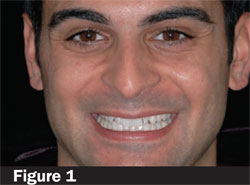 | 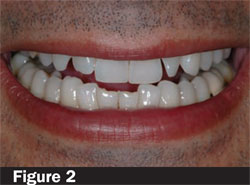 | |
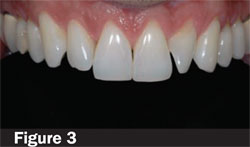 | 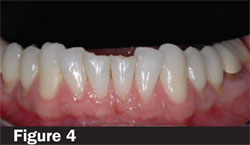 | |
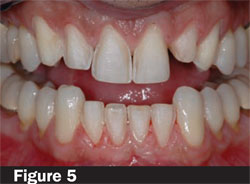 | 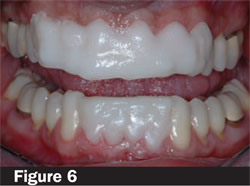 | |
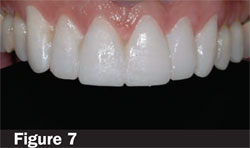 | 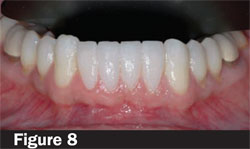 | |
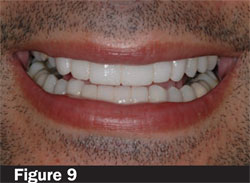 | 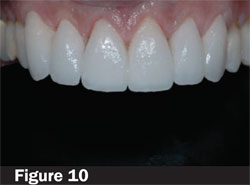 | |
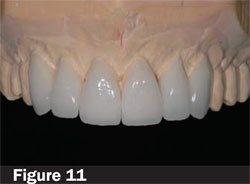 | 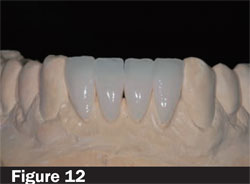 | |
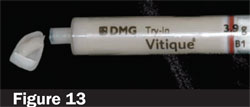 |  | |
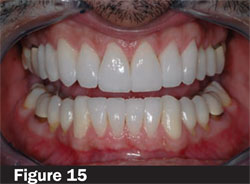 | 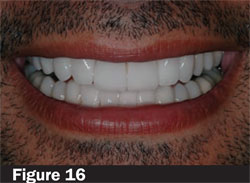 | |
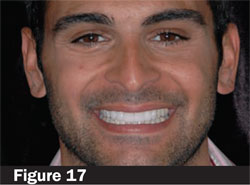 |



